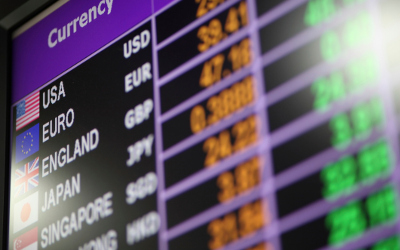AKIPRESS.COM -  Thursday’s 22 percent plunge in the tenge after Kazakhstan abandoned control of its exchange rate revealed a sense of urgency among policy makers: they had tried a managed depreciation just a day earlier. The escalation signaled to investors that it has become too costly for developing nations to defend their currencies.
Thursday’s 22 percent plunge in the tenge after Kazakhstan abandoned control of its exchange rate revealed a sense of urgency among policy makers: they had tried a managed depreciation just a day earlier. The escalation signaled to investors that it has become too costly for developing nations to defend their currencies.
The trigger for the wave of depreciations was China’s decision to weaken the yuan on Aug. 11, leaving countries competing with the world’s second-largest economy in export markets and those selling goods to it at a disadvantage. That added to the woes of emerging markets already reeling from a looming increase in U.S. interest rates and weakness in oil prices. Some, like the countries of the former Soviet Union, face an additional problem: the ruble’s continued weakness puts them in an unfavorable position in their trade with Russia, reports Bloomberg.
Here’s a look at the currencies that are among those most at risk from this conflux of global developments:
* Saudi Arabia’s riyal: Armed with $672 billion in foreign reserves, Saudi Arabia, the world’s largest oil exporter, has enough capacity to hold the peg, according to Deutsche Bank AG. Nonetheless, speculators are betting on a break of the currency regime as crude oil tumbled to a seven-year low. The forwards, contracts used by traders to bet on or hedge against future price moves, fell to the weakest since 2003, implying about a 1 percent decline in the riyal over the next 12 months.
* Turkmenistan’s manat: This oil-exporting nation with close economic ties to Russia devalued its currency by 19 percent in January. Stockholm-based SEB AB forecasts a further weakening of as much as 20 percent in the next six months.
* Tajikistan’s somoni: The nation has close ties with Kazakhstan, which accounts for about 11 percent of trade, and SEB expects a depreciation of 10 to 20 percent.
* Armenia’s dram: The currency has lost 15 percent in the past 12 months, compared with a 46 percent drop in the ruble. A quarter of the country’s trade is with Russia.
* Kyrgyzstan’s som: The weaker tenge will put pressure the som because of this country’s ties to Kazakhstan, according to BMI Research.
* Egypt’s pound: The country has limited investors’ access to foreign currencies amid a shortage since the 2011 Arab Spring protests. Traders are betting the pound will weaken about 22 percent in a year, according to 12-month non-deliverable forwards.
* Turkey’s lira: It’s one of the world’s worst-performing currencies since China’s devaluation on Aug. 11. An escalation in political violence and the probability of early elections compound the issues.
* Nigeria’s naira: Policy makers in this oil-exporting nation are trying to hold the currency at a level most see as too high. Trading in forwards indicates the currency will fall more than 20 percent against the dollar over the next year.
* Ghana’s cedi: Also an oil exporter, though its main problems are mainly fiscal imbalances, rising inflation and increasing debt.
* Zambia’s kwacha: The country is heavily exposed to China as copper accounts for about 70 percent of exports.
* Malaysia’s ringgit: The currency slid to a 17-year low on Thursday and foreign-exchange reserves fell below the $100 billion mark for the first time since 2010.
